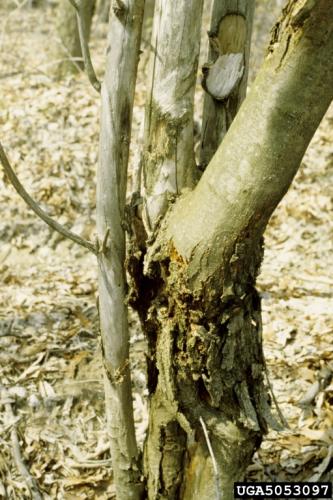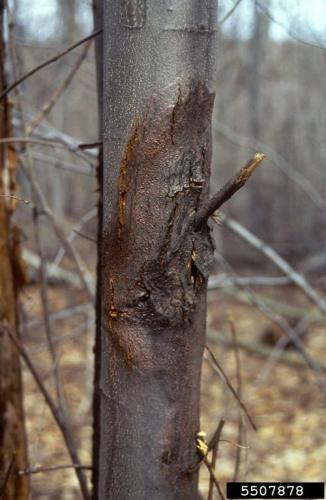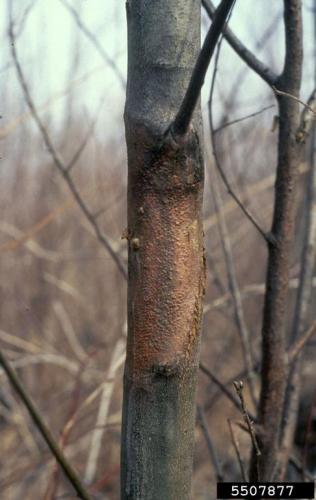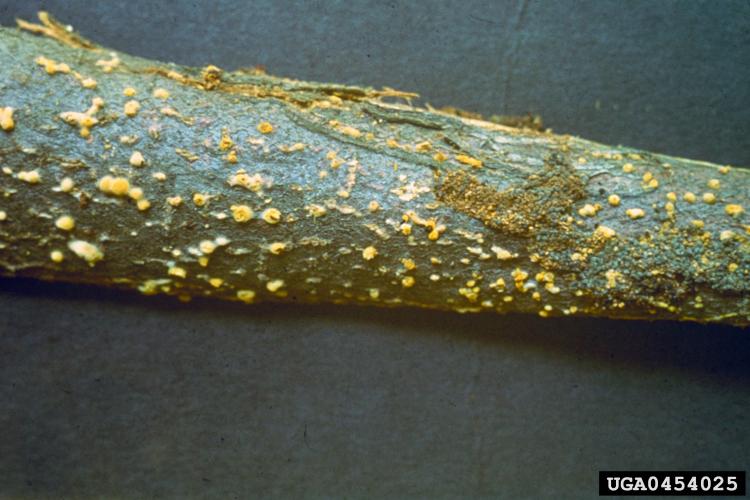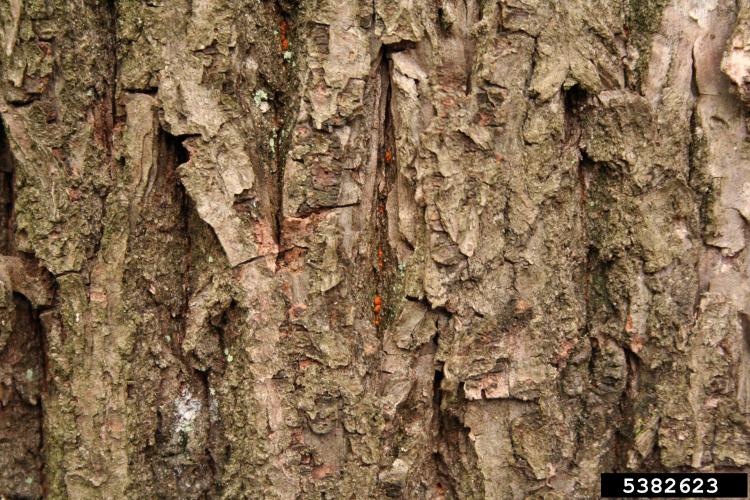Chestnut Blight
Identification
Chestnut blight is a lethal fungus that infects the American chestnut (Castanea dentata). Spores of the fungus are spread through wind, rain, and on small animals. Spores that find a wound in the bark of a chestnut tree grow quickly through the cambium layer, girdling the tree. The fungus causes sunken or swollen cankers to form on the bark. The tree dies back above the cankers, typically in the first season. The whole tree often dies in the second year of infection.
signs and symptoms
• Yellow-orange, pin head sized fungal fruiting bodies (pycnidia) on the bark and cankers
• Swollen or sunken cankers on the trunk or other bark surface area
• Dieback above the cankers
• Trunk sprouts below the cankers
See image slideshow above for signs and symptoms.
Biology
Origin
Chestnut blight is native to Asia and was brought to the United States on imported live trees. It was first discovered in 1904, in New York City and spread throughout the native range of the American chestnut by the 1930’s. By the 1940’s the American chestnut, which had comprised a quarter of the hardwood tree population in eastern forests, had become a threatened species. Today the tree has been virtually eliminated as a commercial species in the eastern forests. The species can still be found in the understory since the roots of trees killed by the fungus may send up sprouts, but they are nearly all killed by the fungus while still saplings.
Life Cycle
The fungus invades an American chestnut through wounds in the tree’s bark where it proceeds to grow through the cambium layer of the tree. The fungus reproduces by creating yellow-orange fruiting bodies (pycnidia) that are the size of a pin head and contain asexual spores. The fruiting bodies appear around the cankers on the infected tree’s bark where the spores are then transported by wind, rain, or animals to other trees.
Ecological threat
Before the blight, American chestnut was the dominant hardwood species in the eastern forests, making up roughly 20% of the forest. It produced a nut that was a nutritious food source for wildlife; the tree was ranked the most important wildlife plant in the eastern United States. The nut was also valued as food by humans. The tree was a prized lumber species since it grew straight, often 50 feet high before branching out, and the wood was rot-resistant.
More information about the historical and ecological significance of the American chestnut.
Vermont Distribution
Chestnut blight has spread throughout Vermont.
A map of the blight’s North American distribution can be found here.
Citations
Photo Credit
George Hudler, Cornell University, Bugwood.org
Joseph OBrien, USDA Forest Service, Bugwood.org
Andrej Kunca, National Forest Center- Slovakia, Bugwood.org
